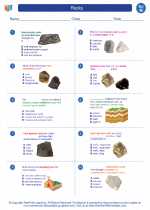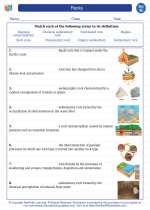States of Matter
States of matter refer to the distinct forms that different phases of matter can take. The three primary states of matter are solid, liquid, and gas.
Solid
A solid is characterized by its definite shape and volume. The particles in a solid are closely packed together and vibrate in place, but do not have enough energy to break free from their fixed positions.
Liquid
Liquids have a definite volume, but they take the shape of their container. The particles in a liquid are more spread out than in a solid and can move past one another, allowing the liquid to flow.
Gas
Gases have neither a definite shape nor a definite volume. The particles in a gas are far apart and move freely, filling the entire space available to them. Gases can be compressed and expanded more easily than liquids or solids.
Changes in State
Changes in state occur when a substance is heated or cooled. When a solid is heated, it may melt into a liquid. When a liquid is heated further, it may vaporize into a gas. The reverse processes occur when a substance is cooled.
Plasma
Plasma is another state of matter, which consists of a collection of charged particles. It is often found in stars and lightning bolts.
Study Guide
- Define the three primary states of matter.
- Describe the characteristics of solids, liquids, and gases.
- Explain the changes in state that occur with heating and cooling.
- Identify examples of each state of matter in everyday life.
- Research the properties of plasma and its occurrence in natural phenomena.
[States Of Matter] Related Worksheets and Study Guides:
.◂Science Worksheets and Study Guides Eighth Grade. Rocks

 Worksheet/Answer key
Worksheet/Answer key
 Worksheet/Answer key
Worksheet/Answer key
 Vocabulary/Answer key
Vocabulary/Answer key
 Vocabulary/Answer key
Vocabulary/Answer key
 Vocabulary/Answer key
Vocabulary/Answer key
